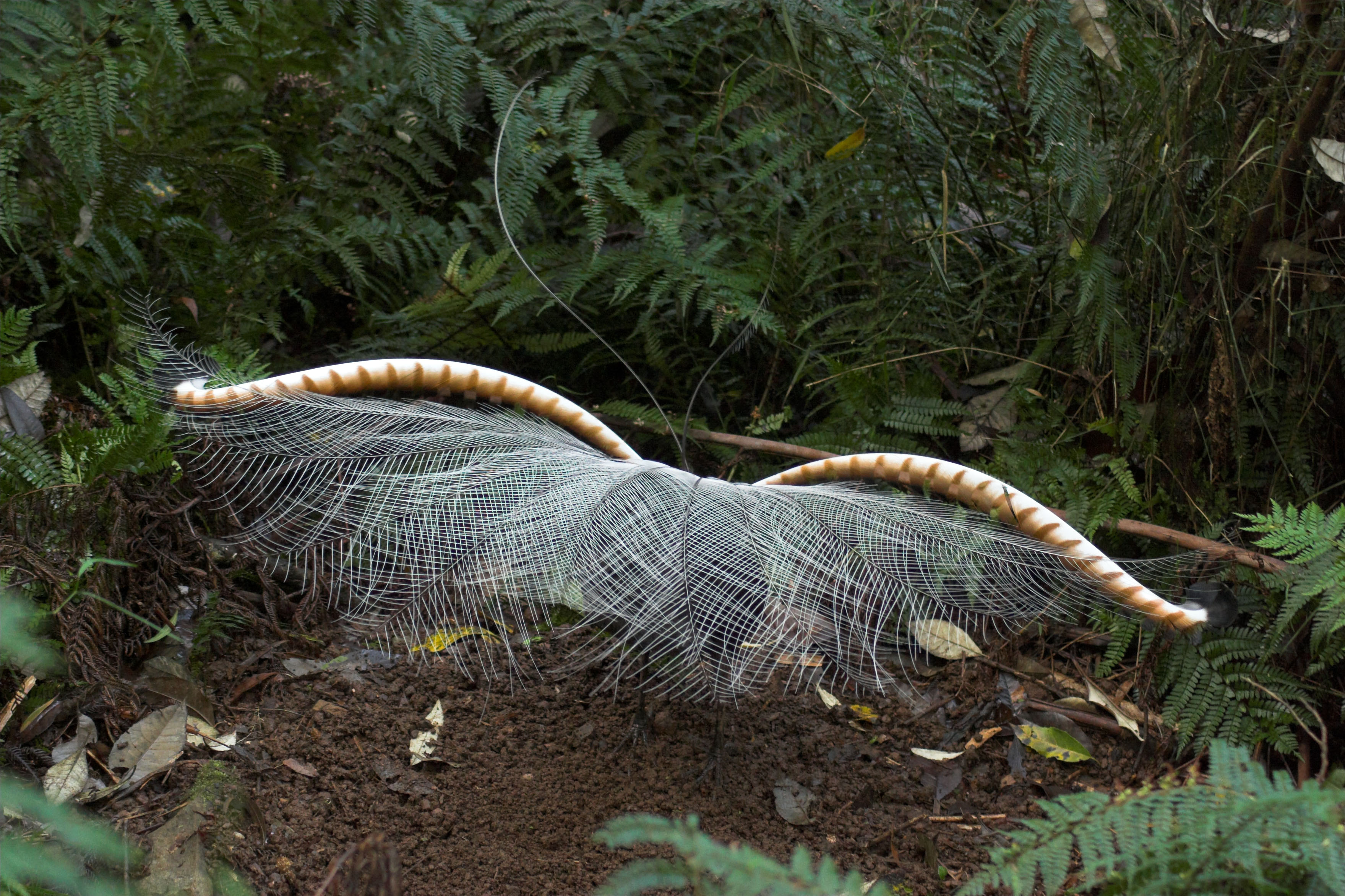Groovy Birds Dance the 'Grapevine' to Score Chicks

Humans aren't the only animals that dance to a beat: Deep in the forest of Southeastern Australia, male lyrebirds groove to their own music, a new study reports.
The study researchers found that during mating displays, male superb lyrebirds (Menura novaehollandiae) — medium-size birds with peacocklike tail feathers — sing songs and perform coordinated dance movements. And just as humans waltz to waltz music and salsa to salsa music, male lyrebirds have different dance moves for different kinds of music. One lyrebird move even resembles "the grapevine."
Song and dance are ubiquitous in human culture. Humans may possess a fundamental cognitive connection between music and dance, studies suggest. But until now, very little research has focused on how animals combine song and movement.
"Our study is the first to show that a nonhuman animal flexibly coordinates song with dance movements," said study researcher Anastasia Dalziell of Australian National University. [7 Ways Animals Are Like Humans]
Birds that boogie
Dalziell and her colleagues recorded video of the dancing displays in male lyrebirds in Sherbrooke Forest, in Australia’s Dandenong Ranges National Park.
Male lyrebirds sing and dance to impress a female. If she is wowed by his performance, she will mate with him and have his young — so the stakes are pretty high for putting on a good show.
Get the world’s most fascinating discoveries delivered straight to your inbox.
The males sing four different "songs" in a sequence, each of which is paired with specific dance moves. During the opening song, the male flips his long lacy white tail over his head and walks sideways, much like doing "the grapevine." In the second song, he narrows his tail into a Mohawk-like shape. In the third song, while keeping his tail in the Mohawk position, the male jumps and flaps his wings. And for the final song, he fans out his tail again.
The songs themselves are relatively distinctive, too, Dalziell said. "For example,the lyrebird's opening song sounds like a 1980s video arcade game," she noted.
Dancing appears to be voluntary for the birds, because they do not need the movements to produce their songs, and some bird species sing without dancing, the researchers report. The birds make mistakes sometimes, too — such as doing the wrong move for a particular song — suggesting dancing is mentally challenging for the birds, just as it is for humans.
Comparing the lyrebird dances to humans’ moves raises some interesting questions, said biologist Heather Williams of Williams College in Williamstown, Mass., who was not involved in the study. For instance, she told LiveScience, do the dances vary over time within a bird population, and do different populations have different songs and dances? And how do dance steps arise and become matched with a song?
The researchers don't know whether the birds' dance routines are learned or innate. But since the birds learn their songs, Williams said, it seems likely they learn the dances that go with them , too, possibly by watching older males.
Animal performers
In addition to lyrebirds and humans, other animals have been known to get their groove on. Many other birds are known for dancing, including manikins, bowerbirds, birds of paradise and cranes, and still others perform movements with their calls. Even some spiders engage in dance displays that involve acoustic vibrations outside the range of human hearing.
"But while lyrebirds do have a particularly complex song-and-dance routine, I'm sure they are not the only animals [besides humans] to flexibly coordinate a repertoire of songs with a repertoire of dance movements," Dalziell said.
The findings were detailed today (June 6) in the journal Current Biology.
Follow Tanya Lewis on Twitter and Google+. Follow us @livescience, Facebook & Google+. Original article on LiveScience.com.




